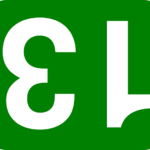Mortgage forbearance for homeowners, shout the headlines. No need to make a house payment.
Borrowers who can’t make this month’s mortgage payment were thrown a lifeline of sorts in the coronavirus rescue package.
Only it’s probably not the help you think it is.
And the lifeline may be far more fragile than you will need in the long run.
So, let’s take a tour of the CARES Act as it applies to home loans and see what the neighborhood looks like.
Not all home mortgages are covered
Only home loans that are made, owned or backed by an arm of the federal government are covered. That’s approximately two-thirds of all home loans.
Fannie Mae and Freddie Mac handle most of the federal loans. See whether your loan is one of the covered federally-backed loans with these look up tools.
If your loan is not federally backed, you need to look to your loan servicer or to local and state protections if you can’t make your mortgage payments.
Hardship must be virus-related
 To invoke the protections of the rescue package, your inability to make the mortgage payment has to be traceable to the virus or the fight against the virus.
To invoke the protections of the rescue package, your inability to make the mortgage payment has to be traceable to the virus or the fight against the virus.
Apparently, all that is required is a statement that your financial hardship is caused by the National Emergency.
No magic words, no sworn statements, no documentary proof. Just blame the virus.
Claiming the protection
Early discussions said “call your lender”. Well, we know how practical that is when millions are trying to get through on the phone.
Calling works, if you can connect.
Better, check out your servicer’s website for a Coronavirus hardship page. Many allow you to sign up for help by checking a box, or sending an email through their site.
Always, when claiming a benefit, follow up in writing with the statement of hardship and your contact info and loan number.
We have to expect screwups and delays. As a society, we’ve never experienced a crisis this sudden, dire, and widespread. So back up your claim in writing, and keep a copy.
What is forbearance
The CARES Act offers forbearance to borrowers with federally backed loans. Just what is forbearance.
Forbearance is a suspension of payments
In essence, the lender puts on hold its right to invoke legal consequences for failing to pay.
Contrast forbearance with deferral: deferral adds missed payments to end of loan
Importantly, at the end of the period of suspension, all of the suspended payments are then fully due.
Ouch!
So, take the six month forbearance provided in the law, and in month seven, those six months of payments are due. (The law allows for a request to extend the period of forbearance for another six months. A request for a further forbearance MUST be made during the first period of forbearance.
What comes after forbearance
Here’s where the short-term nature of the remedy comes up short. This bill just pushes the nonpayment problem down the pike.
What the feds are saying is that at the end of the forbearance period, each borrower will have to make a deal with their servicer to get current.
UPDATE: Feds assure borrowers that their homes aren’t at risk of loss due to forbearance. The alternatives are still to be worked out individually.
At the current time, there are no regulations or even templates about what that “deal” might look like.
But if you were involved in mortgage modifications following the Great Recession, you’ve looked into the maw of chaos.
Given the much broader path of these troubles, the mess to follow will make 2008 look orderly.
What lenders are offering
 I’ve seen a number of offers stuffed in mortgage statements in the last month offering forbearance to borrowers, apparently without asking.
I’ve seen a number of offers stuffed in mortgage statements in the last month offering forbearance to borrowers, apparently without asking.
Typically, the lender offers to suspend payments for three months, with all missed payments due in month 4. I’m fearful that borrowers will snap at that offer without understanding it, or without any real expectation of how they’ll make four months’ payment at the end of the forbearance.
Neither do I know whether these offers are going to homeowners with federally backed loans or whether they are being offered more broadly.
I suspect the offers are made in good faith and on the spur of the moment. However, I’m fearful about the lender’s plans (or lack of plans) for what happens after forbearance.
Details to follow
Obviously, the CARES Act was cobbled together quickly in the face of emergency. It surely won’t be the last word from Congress on getting homeowners through this crisis.
Watch for the next round of remedies, and raise your voice for a fair, enforceable, efficient process to preserve homeownership in a time of pandemic.





